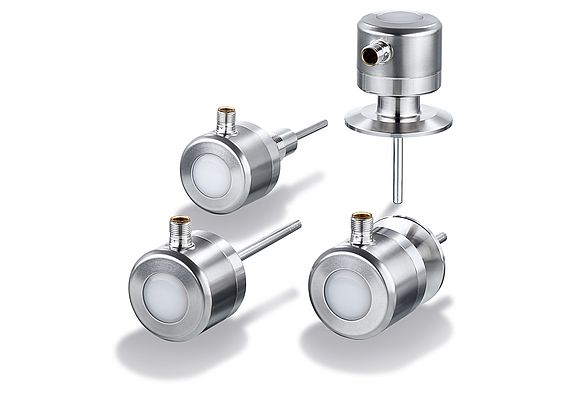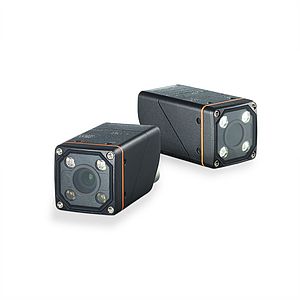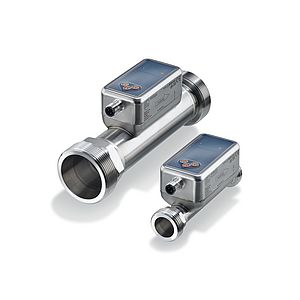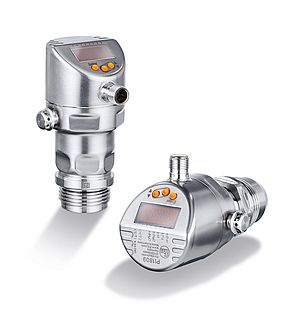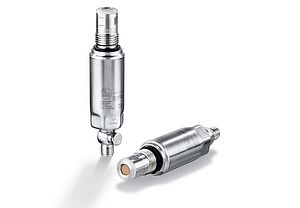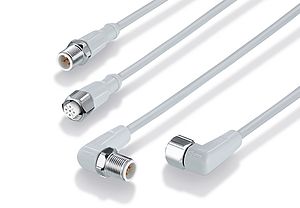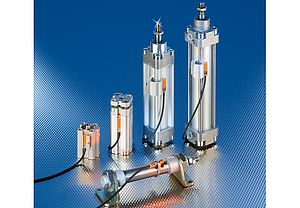The new ifm TCC temperature sensor permanently compares the measured temperature value to a simultaneously measured reference value. If the deviation is outside the tolerance range, which can be set between 0.5 and 3 K, the TCC provides an optical signal and sends a message to the central controller. Any malfunction is also signalled. The communication between the sensor and the controller is based on the digital IO-Link protocol. The LED on the sensor head indicates the current status: green for reliable operation, blue for temperature deviation outside the tolerance range and red for a serious malfunction, such as a failure of the measuring element.
Transparent communication with the sensor
Via IO-Link, the sensor can transmit further data required for comprehensive diagnostics. This includes the installation date, the operating hours, the temperature histogram as well as the logbooks on event messages and on the calibration check status. The set-up of the sensor is also carried out conveniently via IO-Link, for example setting of the tolerance range. There is also a simulation mode in which the process temperature and the reference tempera-ture can be freely selected to verify whether the sensor has been correctly integrated into the controller.
Robust design
Thanks to its fully welded and sealed housing and a new measuring probe design, the TCC is permanently resistant to external influences such as moisture, thermal and mechanical shocks and vibrations. The inline calibration process ensures an accuracy of +/- 0.2 K across the entire measuring range. This makes the TCC perfectly suited for use in temperature-sensitive processes such as food, rubber or carbon processing. Particularly in production processes where exact temperature values are decisive for product quality, it is important that the measured values are absolutely precise. The new temperature sensor allows plant operators to take event-related measures in case of drifts instead of waiting for the next planned calibration interval. This reduces the risk of losing entire production batches due to faulty production temperatures.


